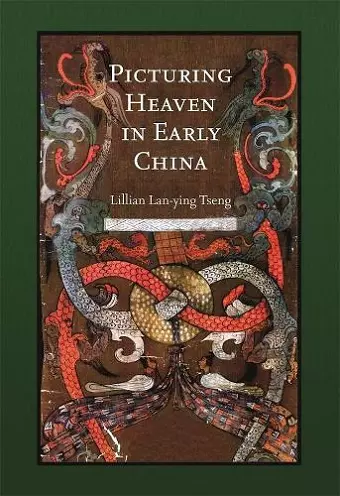Picturing Heaven in Early China
Format:Hardback
Publisher:Harvard University, Asia Center
Published:24th Aug '11
Currently unavailable, and unfortunately no date known when it will be back

This remarkable book readably represents a formidable effort of research, drawing on the rich studies of history, art, and paleography that have accumulated over centuries, and particularly on the last forty years of archeology. Lillian Lan-ying Tseng colligates images that no one earlier has studied side by side, and draws from them quite original conclusions. I find her arguments ambitious, ingenious, and persuasive... They show once and for all that pictures are as important as verbal records for understanding the history of cosmology and astronomy. -- Nathan Sivin, Professor Emeritus of Chinese Culture and of the History of Science, University of Pennsylvania Picturing Heaven in Early China makes an extremely important contribution to the history of Chinese art, culture, and science. Its comprehensive scope and analytical depth, its confident use of both primary textual sources and archeological evidence, its lucid synthesis of a vast array of scholarly literature ... and above all, its cogent narrative and conceptual scheme make it the most convenient and reliable go-to volume on the subject. -- Eugene Wang, Abby Aldrich Rockefeller Professor of Asian Art, Harvard University
Tian, or Heaven, had been used in China since the Western Zhou to indicate both the sky and the highest god. Examining excavated materials, Lillian Tseng shows how Han-dynasty artisans transformed various notions of Heaven—as the mandate, the fantasy, and the sky—into pictorial entities, not by what they looked at, but by what they looked into.
Tian, or Heaven, had multiple meanings in early China. It had been used since the Western Zhou to indicate both the sky and the highest god, and later came to be regarded as a force driving the movement of the cosmos and as a home to deities and imaginary animals. By the Han dynasty, which saw an outpouring of visual materials depicting Heaven, the concept of Heaven encompassed an immortal realm to which humans could ascend after death.
Using excavated materials, Lillian Tseng shows how Han artisans transformed various notions of Heaven—as the mandate, the fantasy, and the sky—into pictorial entities. The Han Heaven was not indicated by what the artisans looked at, but rather was suggested by what they looked into. Artisans attained the visibility of Heaven by appropriating and modifying related knowledge of cosmology, mythology, astronomy. Thus the depiction of Heaven in Han China reflected an interface of image and knowledge.
By examining Heaven as depicted in ritual buildings, on household utensils, and in the embellishments of funerary settings, Tseng maintains that visibility can hold up a mirror to visuality; Heaven was culturally constructed and should be culturally reconstructed.
This remarkable book readably represents a formidable effort of research, drawing on the rich studies of history, art, and paleography that have accumulated over centuries, and particularly on the last forty years of archeology. Lillian Lan-ying Tseng colligates images that no one earlier has studied side by side, and draws from them quite original conclusions. I find her arguments ambitious, ingenious, and persuasive. . . . They show once and for all that pictures are as important as verbal records for understanding the history of cosmology and astronomy. -- Nathan Sivin, Professor Emeritus of Chinese Culture and of the History of Science, University of Pennsylvania
Picturing Heaven in Early China makes an extremely important contribution to the history of Chinese art, culture, and science. Its comprehensive scope and analytical depth, its confident use of both primary textual sources and archeological evidence, its lucid synthesis of a vast array of scholarly literature . . . and above all, its cogent narrative and conceptual scheme make it the most convenient and reliable go-to volume on the subject. -- Eugene Wang, Abby Aldrich Rockefeller Professor of Asian Art, Harvard University
- Nominated for James Henry Breasted Prize 2012
- Nominated for Joseph Levenson Book Prize 2013
ISBN: 9780674060692
Dimensions: unknown
Weight: unknown
480 pages